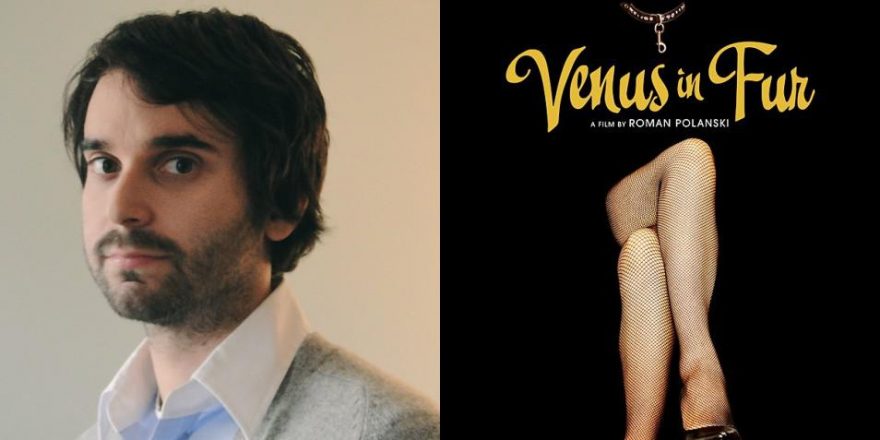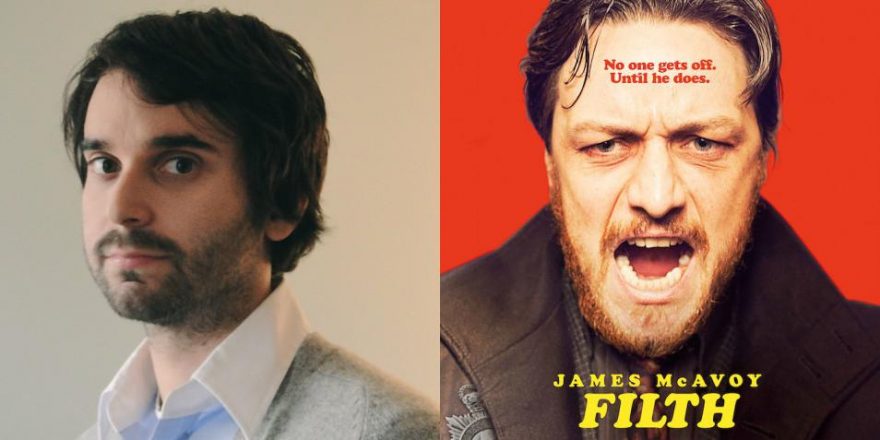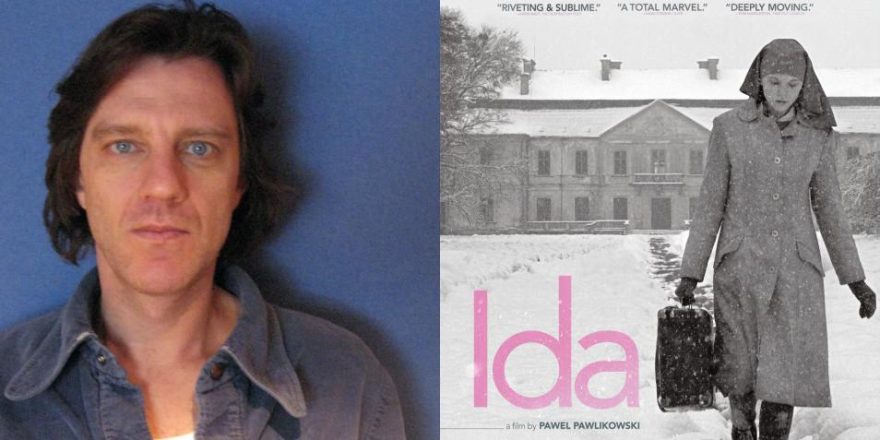Is Roman Polanski the greatest living filmmaker? On any given day, the argument could be made and effortlessly backed up. Polanski is as good as we’ve got, no question. The man is a god of cinema, absolutely on the Mount Rushmore of post-’60s filmmakers. Chinatown and Rosemary’s Baby are both Film 101 and have been for decades, not losing an ounce of their power. If Polanski had made just those two films he’d be one of the most important filmmakers of all time; because of them, he looms as large over New Hollywood as anybody. To say nothing of three earlier staggering masterpieces: Knife in the Water, Cul-de-sac and Repulsion situate him as a major figure of ’60s European art cinema. Did any other director ever move from one movement to the one most directly influenced by it? None of Polanski’s peers made such an effortlessly successful transition to Hollywood, writing film history every step of the way.
Let’s not forget: The Tenant is a work of astonishing terror and brilliance, only prevented from reaching canonical status because it is overshadowed by similar, more accessible films of Polanski’s. Macbeth is as good a Shakespeare film as has ever been made, and Frantic doesn’t stick the landing but is a master class in building suspense unseen since Hitchcock. One might call The Fearless Vampire Killers, Bitter Moon and Death and the Maiden lesser films, thought one would be wrong on all counts — a true master cannot make a slight piece of work. Polanski has proven himself capable of greatness more times than almost any other director and all of his films must be thoroughly studied as essential works of a master, as I will be doing in just a moment with his newest film, the slight but rich Venus in Fur.
Here is the other essentially unprecedented thing Polanski accomplished: he never lost it. 2010’s The Ghost Writer is, in my opinion: a) the best film of the decade and will likely remain so until 2020, b) the last true masterpiece of cinema and c) as good as Rosemary’s Baby and, I believe after my recent annual re-watching of it, a better, more hyperbolically crafted object of perfect cinema than Chinatown. This film stands alone, truly, and anybody who doesn’t agree either needs to revisit it or admit that maybe cinema just isn’t for them.
Carnage, Polanski’s 2011 adaptation of Yasmina Reza’s stage four-hander God of Carnage, seems like Polanski realizing that topping The Ghost Writer is simply not possible, but that he wanted to engage once again with familiar fascinations regarding the suffering and misery that come from confinement. Of course, this is the major theme of just about every one of his films from Knife in the Water to The Ghost Writer, but in Carnage he really goes back to the source, adapting a single-location play and making a film that, like The Ghost Writer, is clearly so deeply personal and responsive to his own life as to almost be autobiographical.
In 2009 Polanski was arrested and placed under house arrest, surely a most torturous punishment for the man who made The Tenant and Repulsion. Confined spaces make Polanski sick with dread, an experience Pierce Brosnan’s retired Prime Minister Lang literally suffers through in The Ghost Writer. So I found it fascinating that his first film after this experience was a familiar (to him) story of the boundaries of society slowly unraveling under the duress of enclosure. Carnage seems judgmental of its characters: a bunch of wealthy, insufferable baby boomer pieces of shit who spend 80 minutes arguing over an incident that nobody actually witnessed. Considering any biographical ties to Polanski’s own life, it is not difficult to see what appealed to him about adapting the play on which Carnage is based.
Which brings me back to Roman Polanski’s newest film, Venus in Fur, also based on a play and confined to a single location but this time featuring his fewest characters yet: just the writer/director of the play, Thomas (Mathieu Amalric), and as an auditioning actress, Mrs. Polanski, Emmanuelle Seigner, making a welcome return to her husband’s work after memorable supporting performances in Frantic, Bitter Moon, and The Ninth Gate. This time, the show is all hers and she is quite excellent. Polanski shoots Seigner as he always has: as an object of unattainable sexual perfection. Her Vanda arrives to audition for Thomas’s sexually explicit new play and the games begin, both sexual and psychological. If this film were directed by anybody else, they’d be accused of nothing but ripping off Polanski.
The plot is basically non-existent, so there’s not much else that can be said about it without ruining the handful of surprising moments the film has to offer. Amalric is great as always, making the most here of his widely acknowledged resemblance to Polanski himself. If Venus in Fur had been made when Polanski was casting himself as the lead in his films, as he did with The Fearless Vampire Killers and The Tenant, it is unthinkable that he wouldn’t be playing Thomas. By the end, it is impossible not to think exclusively of The Tenant, of course not a bad thing. As I said above, Polanski never lost it and to make a film in his late 70s that honestly earns favorable comparisons to one from his 40s is no small feat, and one few filmmakers could ever hope to achieve.
Typical of Polanski, Vanda’s motivations are murky, only revealing themselves slowly as the power struggles become more of a game, as in Tess and Macbeth. Vanda is the opposite of Catherine Deneuve in Repulsion: fully in control of her surroundings and eventually able to bend them to shape her will. If Venus in Fur isn’t narratively engrossing (not surprising considering the plot is already minimal and the device of a single scene/scenario/moment-based play being translated from stage to film can only expose the narrative shortcomings perhaps less extreme on a stage) it then allows a viewer to sit back and marvel at what an unfathomably great director Polanski (still) is. The camera work here is fluid, and marvelous. Even when you think it’s static, it’s subtly moving around, creeping nervously by the performers as though afraid of being detected. This perverse touch makes it feel as though the viewer is spying, and indeed as the content of Vanda and Thomas’ relationship takes a turn for the kinky and explicit, this feeling pays off. Carnage was similar, giving both films a “say what you will about the content, but the man isn’t lazy in his old age” quality.
Furthermore and yet again, the performances are typically excellent. Polanski doesn’t get talked about as much as he should as an “actor’s director” but he consistently gets remarkable work. The film, even at its dullest moments, is full of choices, intentional and deliberate and unmistakably Polanski’s own, as though he loved the play but needed to set it inside his own universe in order to properly connect with it. The synergy between him and Seigner is clearly quite strong and she goes from naïve to confrontational to domineering to maniacally in control so subtly that I barely registered the shifts. It is impressive watching her exert her womanly power over an increasingly tepid Amalric.
Thomas is an interesting character here. A lazy reading would assume he is a stand-in for Polanski, what with the resemblance and depiction of a “director” who claims emotional detachment from the transgressive material he labors to realize. According to the press notes, Polanski says he does not feel close to Thomas. This makes sense: nobody does it to Polanski, he does it to you. It is not difficult to see Polanski in Vanda and Deneuve or Mia Farrow in Thomas, being violently forced out of their comfort zones for perhaps a sadistic game, or for the good of the artistry at hand. Either way, the dynamic is interesting but just shy of engrossing enough to not lag slightly.
With Venus in Fur, Polanski has crafted another slow-burn exercise in pushing characters to their limits, with a finale that recalls similar “big finishes” in Rosemary’s Baby, Repulsion, and The Tenant, notably the “Apartment Trilogy” and thus his three most claustrophobic works. (Carnage contains no such conclusion.) Is it a masterpiece? Certainly not. But if anybody can make a solid minor work an enriching, fascinating and contextually essential entry to a body of work spanning more than half a century at an age when most of his peers have petered out or accepted easy obsolescence, it is Polanski. A new film by him commands attention, consideration and respect and we should consider ourselves lucky to have one.






